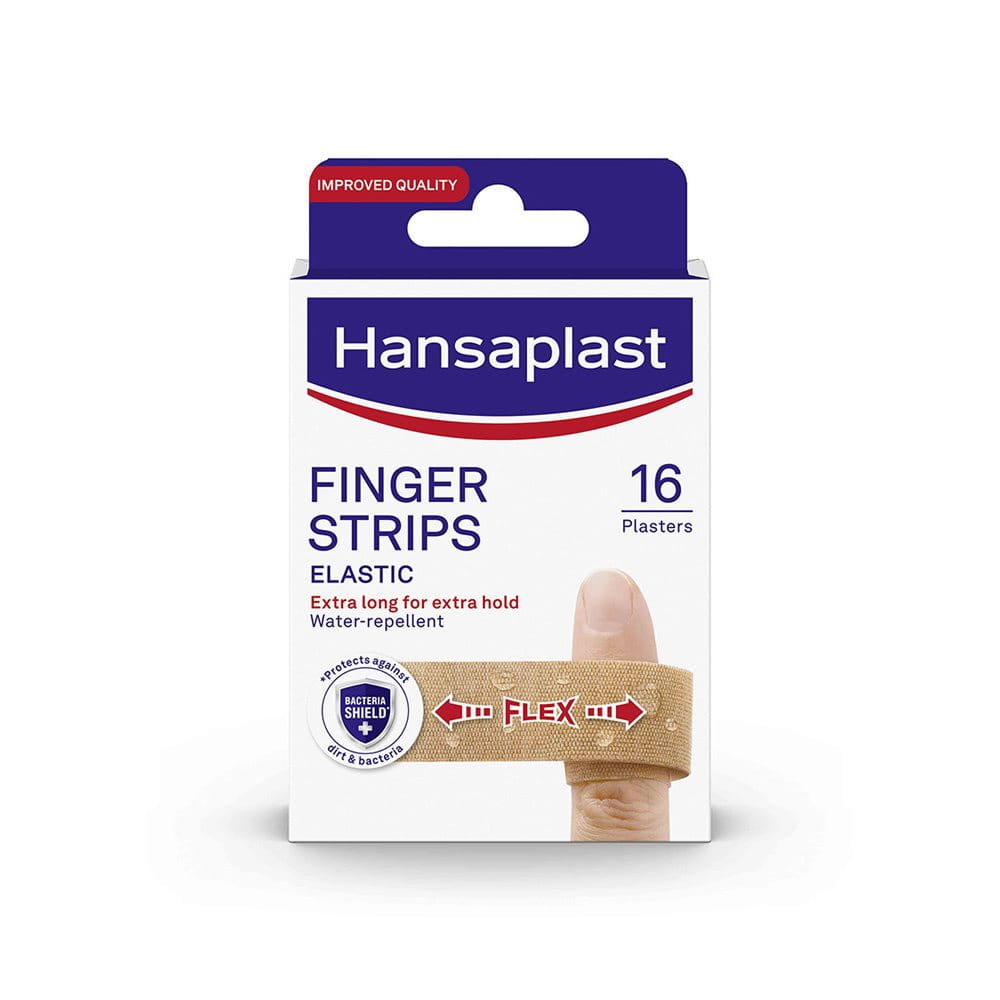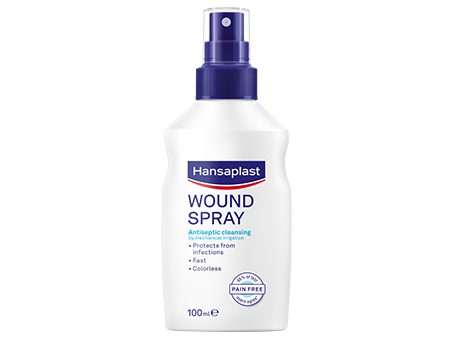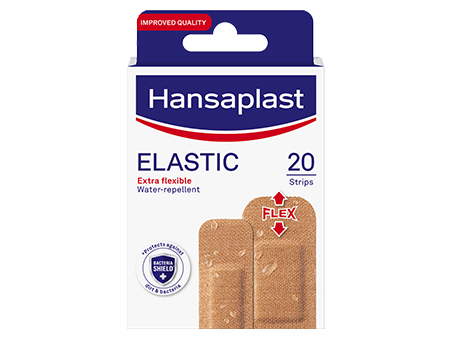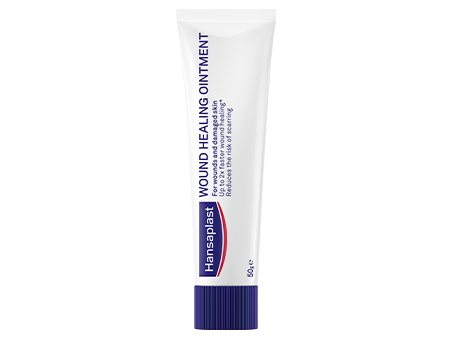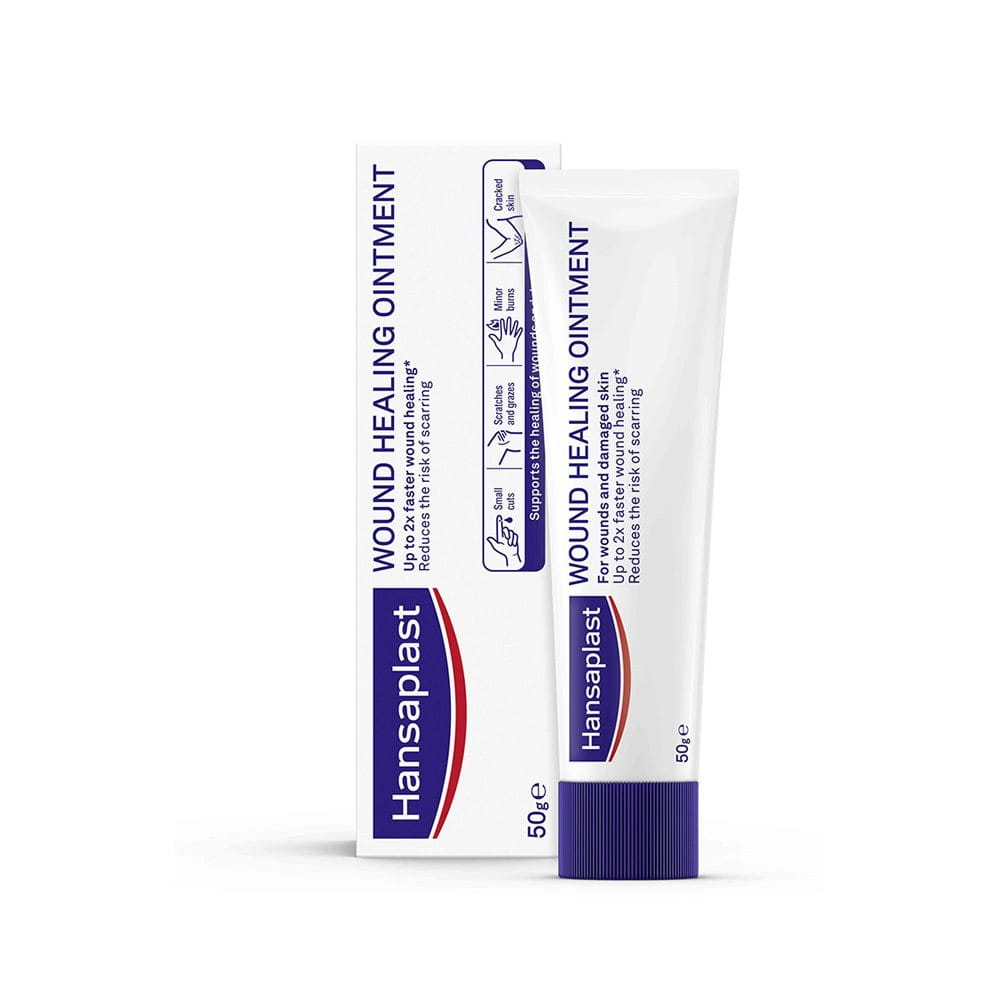What is first aid?
First aid refers to basic medical techniques used in an emergency situation. It can range from the treatment of minor wounds or bruises to the treatment of more serious conditions before professional assistance can arrive. Knowing basic first aid techniques and having your own home first aid kit handy at a moment’s notice is very important, especially if you are the parent or guardian of young children.
First aid kit checklist
A first aid box or medicine cabinet can come in various sizes and can contain many items for their owner’s needs. But there are a few items that they all should share, apart from prescription medication that you take regularly:
Medications, e.g.:
- Antidiarrheal treatment
- Cold medication (decongestants, cough medicine, throat lozenges).
- Basic headache medication or other painkillers
- A fever reducing medication
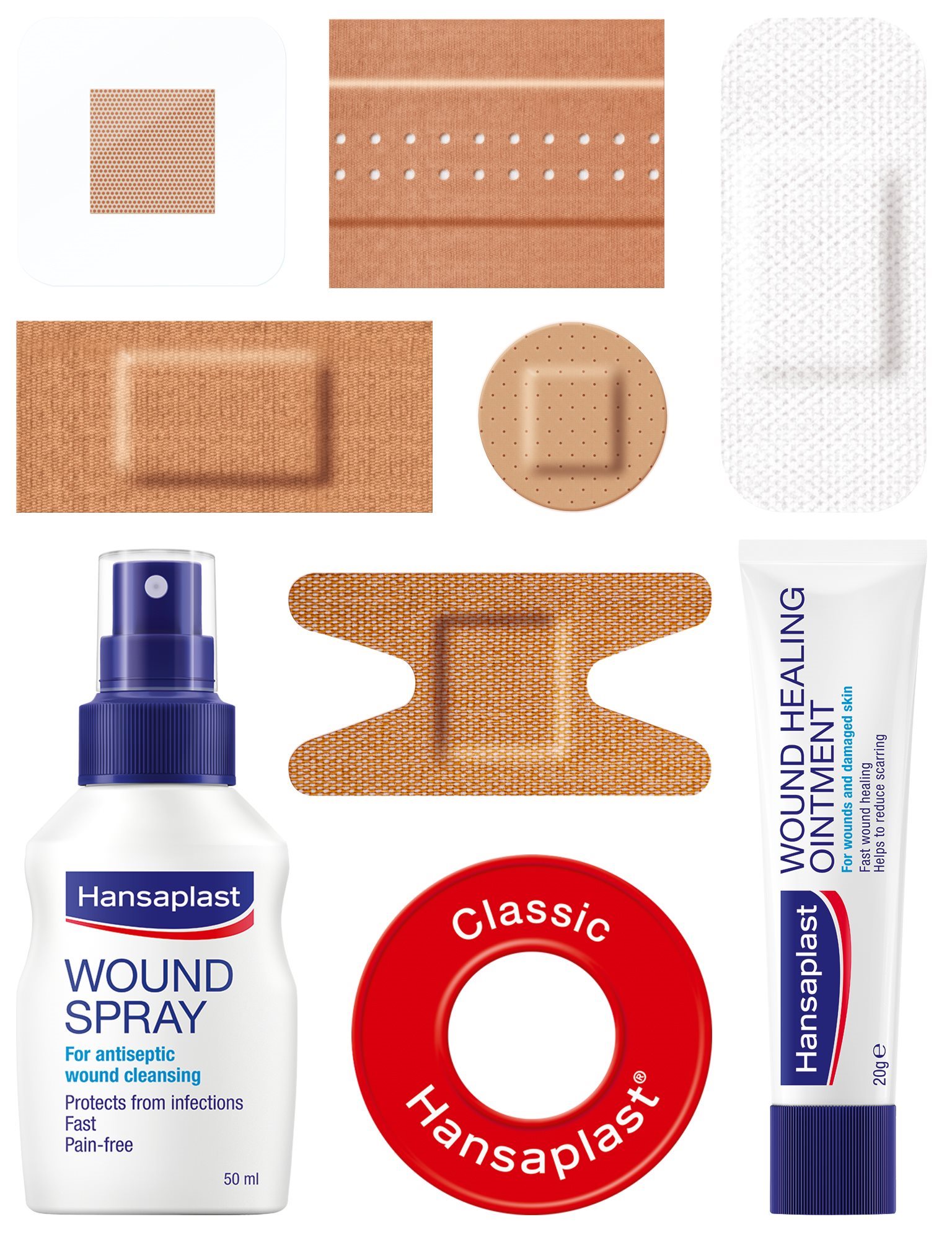
Wound care:
- Hansaplast Wound Spray
- Hansaplast Wound Healing Ointment
- Plasters in various sizes (Hansaplast offers a wide selection, from waterproof to sensitive – keep a basic stock of various plasters.)
- Hansaplast Sterile Compress
- Elastic Fixation Bandage and Fixation Tape for securing dressings and compresses
- Hansaplast Blister Plasters
Other:
- Sterile gloves
- A small pair of scissors – ideal for cutting medical tape, compresses or other bandages to the right size
- Tweezers, e.g. for removing splinters or particles from wounds
- Hansaplast Anti-Insect Spray
- A thermometer
Refreshing your medicine cabinet
Keeping a convenient and well stocked medicine cabinet in a safe but easily accessible place at home is essential. Here are a few easy tips for keeping your medicine cabinet essentials updated and safely stored.
First aid for common injuries
For simple tips on treating the most common types of wounds, such as cuts and grazes, follow Hansaplast’s simple 3 step wound care routine.
